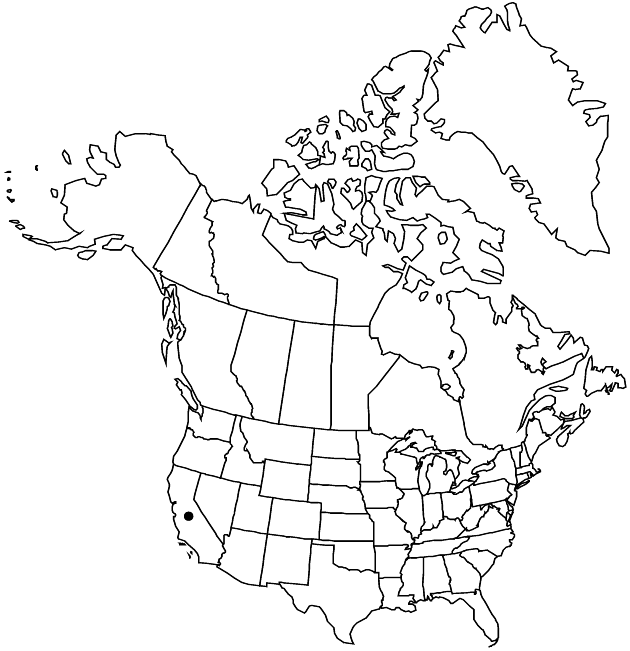Difference between revisions of "Lasthenia coronaria"
Univ. Calif. Publ. Bot. 40: 76. 1966.
FNA>Volume Importer |
FNA>Volume Importer |
||
| Line 15: | Line 15: | ||
|name=Baeria californica | |name=Baeria californica | ||
|authority=(Hooker) K. L. Chambers | |authority=(Hooker) K. L. Chambers | ||
| − | }}{{Treatment/ID/Synonym | + | }} {{Treatment/ID/Synonym |
|name=Baeria coronaria | |name=Baeria coronaria | ||
|authority=(Nuttall) A. Gray | |authority=(Nuttall) A. Gray | ||
| Line 33: | Line 33: | ||
|elevation=0–700 m | |elevation=0–700 m | ||
|distribution=Calif.;Mexico (Baja California). | |distribution=Calif.;Mexico (Baja California). | ||
| − | |discussion=<p>Pappus, head size, and branching pattern vary in Lasthenia coronaria. Two types of pappi are often found within a head and sometimes in different individuals of a population. The most distinctive feature of this species is its glandular herbage, which produces a characteristic sweet scent not present in any other lasthenia.</p> | + | |discussion=<p>Pappus, head size, and branching pattern vary in <i>Lasthenia coronaria</i>. Two types of pappi are often found within a head and sometimes in different individuals of a population. The most distinctive feature of this species is its glandular herbage, which produces a characteristic sweet scent not present in any other lasthenia.</p> |
|tables= | |tables= | ||
|references= | |references= | ||
| Line 57: | Line 57: | ||
|publication year=1966 | |publication year=1966 | ||
|special status= | |special status= | ||
| − | |source xml=https://jpend@bitbucket.org/aafc-mbb/fna-data-curation.git/src/ | + | |source xml=https://jpend@bitbucket.org/aafc-mbb/fna-data-curation.git/src/8f726806613d60c220dc4493de13607dd3150896/coarse_grained_fna_xml/V19-20-21/V21_867.xml |
|tribe=Asteraceae tribe Heliantheae | |tribe=Asteraceae tribe Heliantheae | ||
|subtribe=Asteraceae (tribe Heliantheae) subtribe Baeriinae | |subtribe=Asteraceae (tribe Heliantheae) subtribe Baeriinae | ||
Revision as of 15:37, 18 September 2019
Annuals, to 40 cm (herbage sweetly scented). Stems erect, branched distally, usually glandular-puberulent (often with longer non-glandular hairs as well). Leaves linear, 15–60 × 0.5–5 mm, (not fleshy) margins entire or 1–2-pinnately lobed, faces hairy. Involucres hemispheric to obconic, 4–7 mm. Phyllaries 6–14, lanceolate to ovate, hairy. Receptacles conic, smooth, muricate, or pitted, hairy. Ray florets 6–15; (corollas yellow) laminae linear-oblong or oblong, 3–10 mm. Anther appendages elliptic, acute (style apices ± deltate with apical tufts of hairs and subapical fringes of shorter hairs). Cypselae black, linear to narrowly clavate, to 2.5 mm, hairy; pappi usually of 5–6+ lanceolate to ovate scales (1–5 uniaristate), sometimes of 4–5 subulate, aristate scales, or 0. 2n = 8, 10.
Phenology: Flowering Mar–May.
Habitat: Sunny, open grassy areas
Elevation: 0–700 m
Distribution

Calif., Mexico (Baja California).
Discussion
Pappus, head size, and branching pattern vary in Lasthenia coronaria. Two types of pappi are often found within a head and sometimes in different individuals of a population. The most distinctive feature of this species is its glandular herbage, which produces a characteristic sweet scent not present in any other lasthenia.
Selected References
None.